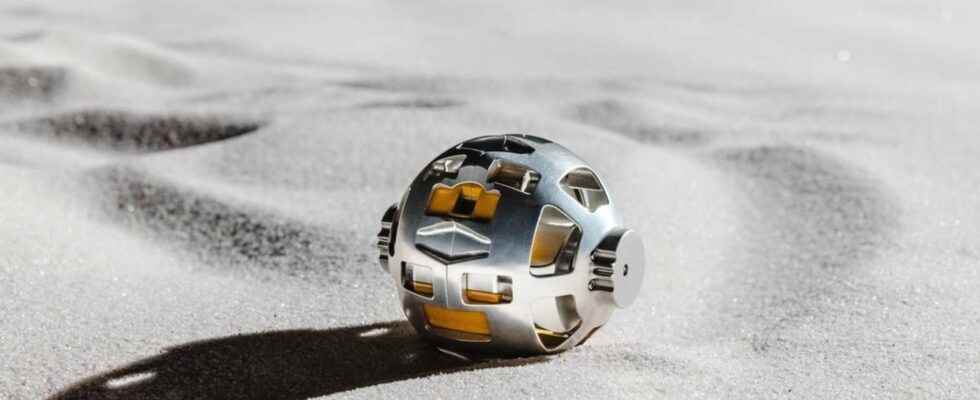During the year 2022, a Japanese company, iSpace, should land a module on the Moon. This mission, in collaboration with Jaxa, the Japanese space agency, would deploy a small spherical robot on the lunar surface. Named Sora-Q, it would be able to collect data concerning the regolith present on the surface of the Moon.
The design of lunar robots is no longer the prerogative of space agencies: toy companies are also looking into the subject! The Japanese space administration, Jaxa, staged in a video released on April 29 a robot of a new kind, resulting from a collaboration with two large companies and academicians. From the joint work of Jaxa, Sony, Doshisha University and the toy company Tomy, was born a spherical robot able to roll over the vast white plains of the Moonthat the Huffington Post compare to droid BB-8 from the saga Star Wars. With a diameter of a few centimeters, equivalent to that of a baseball, Sora-Q weighs only 250 grams. Relatively rare characteristics in the field of space exploration. The video, relayed by the organization Reutersquickly aroused the enthusiasm of the media, amateurs and professionals around the world.
The space exploration robot ‘Sora-Q,’ jointly developed by major Japanese toymaker Tomy and the Japan Aerospace Exploration Agency, will be sent to the moon pic.twitter.com/FLd3su5LCr
— Reuters (@Reuters) April 29, 2022
An exploration “mini-rover”
The models of the little robot unveiled by Jaxa could suggest a science fiction film concept. However, the device could well and truly roll on the Moon by the end of 2022. It will be integrated into a joint Jaxa mission with Japanese company iSpace. Once landed on our natural satellite, Sora-Q will be tasked with rolling through the fine dust strewn across the Moon’s surface, called regolith. The mini-rover, which fits in the palm of a hand, is able to transform its structure to progress through difficult terrain. Sora-Q can split into two parts always joined by a common center. These two sections are the “wheels” of the robot, maneuverable independently of each other in order to overcome certain obstacles.
The objective of Sora-Q, in development since 2015, is to provide Jaxa with data on the robot’s conduct on the Moon, while transferring images to Earth, thanks to a small camera integrated in the center of the structure. . The unit is intended to be resistant to the austere conditions of the lunar soil and regolith, reputed to be particularly adhesive. Made of metal and of plasticSora-Q will be able to face the most extreme temperatures, the latter varying between 120°C and -170°C.
Japan aims for the moon
Sora-Q will therefore be transported to the Moon thanks to the Hakuto-R Mission 1 mission. launcher Falcon 9 would carry a lander designed by the firm iSpace (initially White Label Space), founded in 2008 at the instigation of aerospace engineers. With the Hakuto-R program, conducted in collaboration with Jaxa, iSpace could position itself as a new player of choice in lunar exploration. With this first mission, Japan would place for the first time a robotic device on the Moon. A real technological breakthrough, while thejapanese space agency wants to send a first crew to the Moon before the end of the 2020s.
At the same time, the mission of iSpace and Sora-Q could well benefit many of Jaxa’s partner agencies, while the return of humans to the moon has been initiated since 2018 by the United States. The small Japanese robot should, however, be ahead of the American and Chinese giants: some observers estimate that the launch of iSpace would take place in October 2022 at the earliest.
Interested in what you just read?
